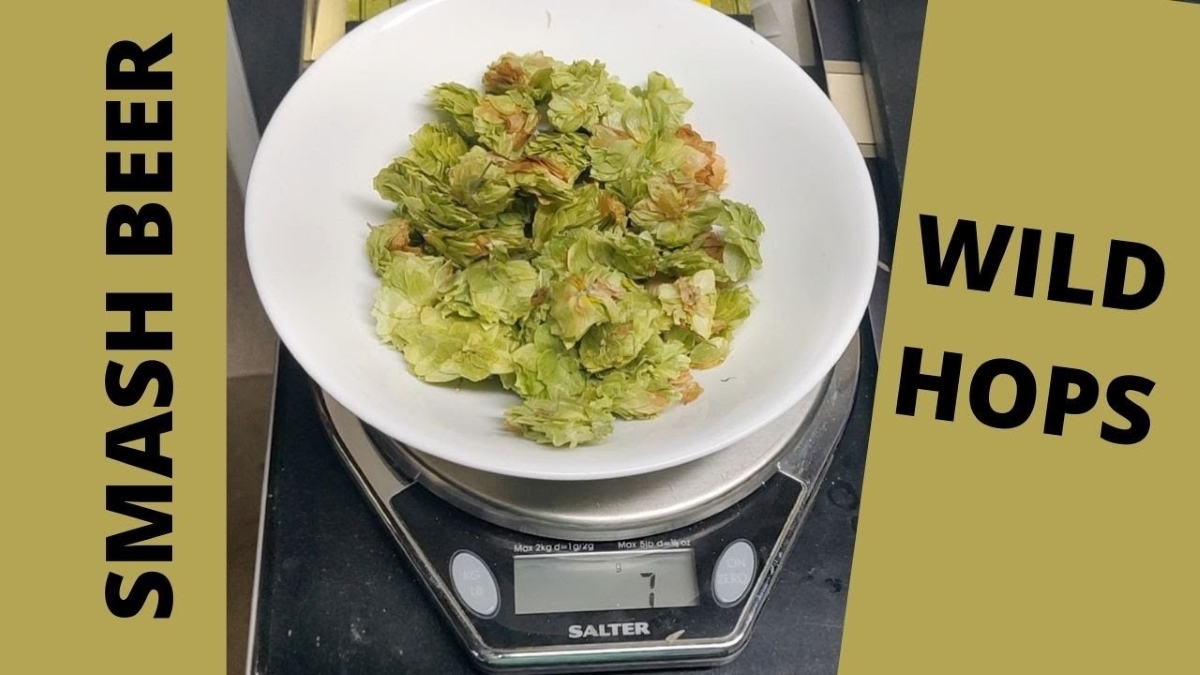Maybe if you live long enough or you’re just lucky, you will encounter a hops bine growing on its own in the woods or on the side of the road. From that encounter, maybe you’ll dig that plant up and place it in your own yard to take care of it properly. In a year or two, the wild hops plant may produce cones and you’ll think to yourself, “Hey, let’s brew a SMaSH beer.”
If all of the above has happened to you, then the content of this video will seem familiar. If not, click the play button and learn more about brewing a SMaSH beer with wild hops.
The Wild Hops SMaSH Beer Story
Down the street from where my brother and I grew up, there was a hops bine. We didn’t know it at the time. We just noticed a climbing plan on the telephone pole every summer.
Of course, as we got older, we were able to identify what it was. Flashforward to last year, road construction threaten the life of this bine. My brother worked out a plan with the work crew to save the plant and bring it to his own hops yard.
Although it’s fun to have wild hops, it would be good to know more about them. We wanted to get them tested by a lab to gather some data. This harvest produced not enough cones (by weight -dried) for a test, so we did the next best thing.
We brewed a 1 US gallon batch using an ounce of the wild hops. The malt selection was 2 pounds of Great Western Pale Malt. Along with the hops and malt, two gallons of filter tap water was used and 1/3 of a packet of US-05 yeast.
SMaSH Beer Tasting Notes
This SMaSH beer got high marks for clarity. Most of the ones I brewed are pretty hazy. There were no dry hops added to this beer so I wonder if that had an effect. Mike said it could be that these new flavor forward hop varieties could have more haze producing compounds.
The aroma had vegetal/sulfur components to it. Mike sense a bit of the old ‘trash heap’ in there. The beer’s flavor had more spicy notes to it. I thought the beer came off a macro lager knockoff. Mike had thoughts of a blonde ale.
After tasting it, we tried to pinpoint what variety these hops could be. Based on the description, they could be Cluster or maybe a Galena. Who knows. Sometimes, it’s best to leave the mystery be.
Maybe next year, we’ll have enough of a hop cone yield to test them properly. Until then, brew on.

1 Pingback